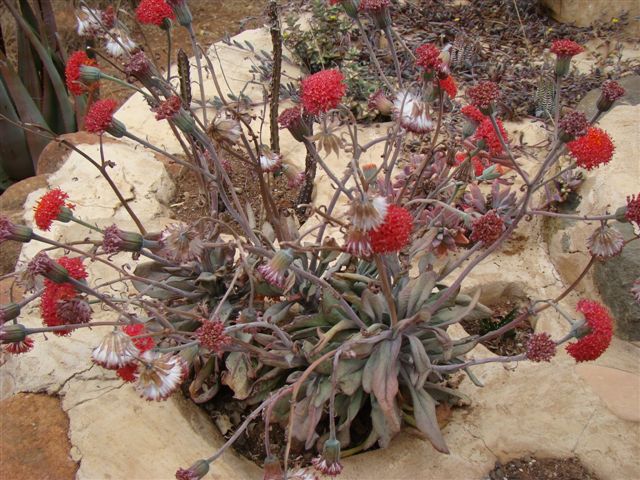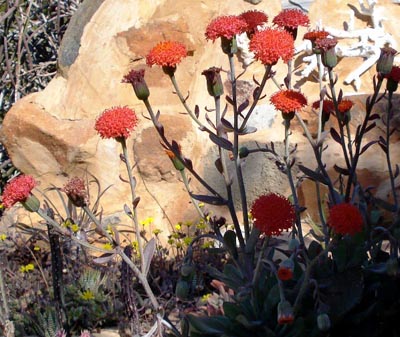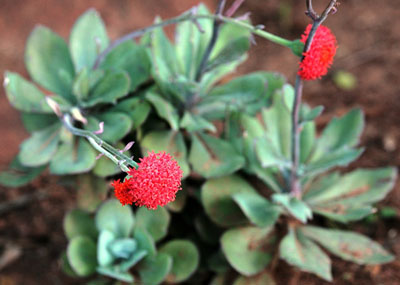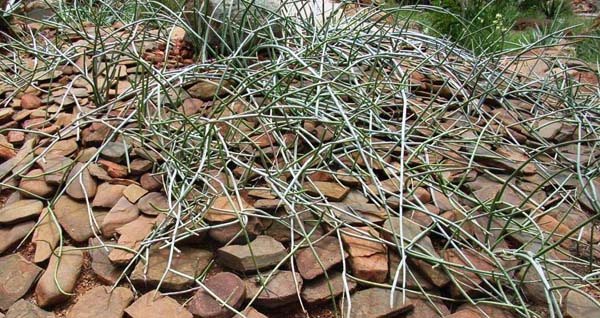|
Botanical name |
Kalanchoe thyrsiflora |
|
Other names |
Flapjacks; paddle plant; geelplakkie or meelplakkie (Afrikaans) |
|
Family |
Crassulaceae (stonecrop) |
|
Dimensions |
A perennial (lasts for a few years), succulent plant with large disc-shaped leaves in a basal rosette on a short stem, producing a flower stalk of over 1 m before dying back; the leaves point upward, which faciltates coping with much direct sun; tends to form clumps |
|
Description of stem |
Short, thick and curving, marked where old leaves had fallen off |
|
Description of leaves |
Large sessile round and flat, succulent (pancake-shaped!); smooth, entire margin, reddish towards the edge, especially if living in dry and harsh sunlight conditions; greyish blue-green elsewhere with a powdery bloom or 'frosty' coating on the leaf surface; smaller leaves occur on the flower stalk, decreasing in size towards the top; the powdery substance resembling flour that occurs abundantly on the leaves and other parts led to the Afrikaans name of 'meelplakkie' |
|
Description of flowers |
The flower is a terminal panicle resembling a thyrse with obscured axis and several sub-axes, on a long, erect stalk; the small, bulging tube-like flowers are grey-green, with four orange-yellow recurving petals, densely clustered and open in random patterns across the thyrse; flowering may occur any time from March through the winter to about October; may flower from the second year |
|
Desciption of seed/fruit |
The seeds ripen only later in mature plants |
|
Description of roots |
|
|
Variation |
|
|
Propagation and cultivation |
The small rosettes appearing on the stem and stalk can be removed and grow very easily; does well in dry and sunny conditions; tends to form new growth if the old flower stalks are removed |
|
Tolerances |
Drought resistant, survives in hot climates; frost tender |
|
Uses |
An attractive and easy to grow garden plant |
|
Ecological rarity |
Not threatened, widely distributed |
|
Pests and diseases |
|
|
Other |
May be confused with Kalanchoe luciae that has whitish petals and somewhat differently shaped leaves? |
|
Location |
Occurs commonly in grassveld in rocky areas and exposed hilltops |
|
Distribution (SA provinces) |
Eastern Cape; Kwazulu-Natal, Free State, Mpumalanga, Limpopo |
|
Country |
South Africa and widely across Africa and into Asia |
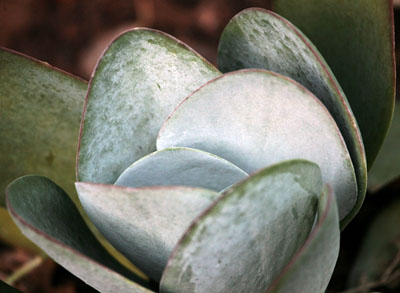
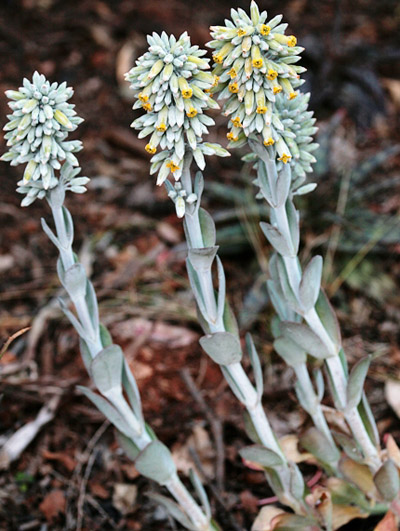
- Hits: 11831


